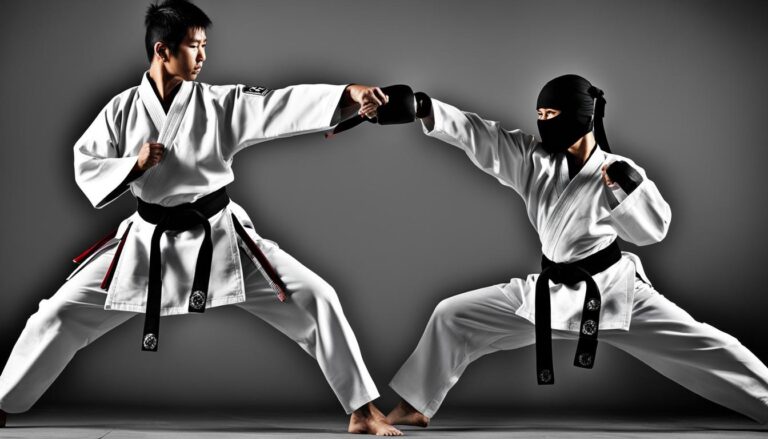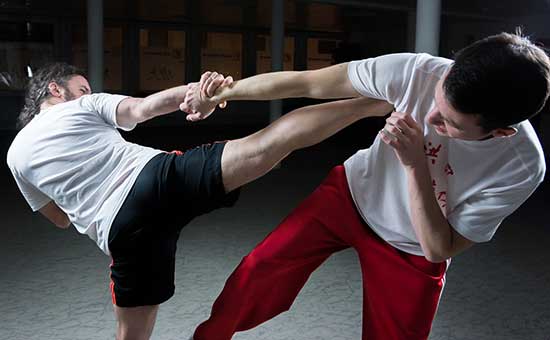When watching a wrestling match, you might have seen a wrestler “tap out” at some point. But what does a wrestling tap out mean? Let’s find out!
Contents
Origins of Tap Outs in Wrestling
The idea of tapping out or submitting is not unique to wrestling. Combat sports like judo, Brazilian jiu-jitsu, and mixed martial arts also use tap outs when a competitor cannot continue to fight.
But when it comes to wrestling, the history of tap outs is deeply rooted in catch wrestling.
Catch wrestling, also known as “the violent art,” originated in the late 19th and early 20th centuries in England and was popular in North America as well.
Catch wrestlers would use a variety of submission holds including chokes, joint locks, and pins to force their opponents to submit and tap out. These techniques became the foundation of modern submission grappling.
The Different Types of Tap Outs
There are three main types of tap outs in wrestling: verbal, physical, and technical. Let’s explore each type in more detail:
Verbal Tap Out
A verbal tap-out occurs when a wrestler says the words “tap” or “I give up” to their opponent or referee.
Verbal submissions are not always easy to hear in a loud wrestling arena, so referees often look for visual cues as well such as hand gestures or head nods.
One of the reasons why verbal tap-outs are important is that they allow wrestlers to protect themselves. If a wrestler is in a submission hold that is causing them pain or could cause serious injury, they can end the match by tapping out before it is too late.
Physical Tap Out
A physical tap-out occurs when a wrestler uses their hand or foot to signal to their opponent or referee that they give up. This is the most common type of tap-out and is often seen in wrestling matches.
Physical tap-outs are important in situations where a wrestler might not be able to speak due to the intensity of the match.
For example, if a wrestler is being choked and cannot catch their breath, they can tap out to signal that they cannot continue.
Technical Tap Out
A technical tap-out occurs when a wrestler is caught in a submission hold and cannot escape or defend themselves.
In this case, the referee will stop the match and declare the opponent the winner by technical submission.
Technical tap-outs are often seen in high-level wrestling competitions where athletes are skilled in a variety of submission holds.
They are also used in situations where a wrestler might be in danger of serious injury if the match continues.
What Happens When a Wrestler Taps Out?
When a wrestler taps out, the match is immediately stopped, and the opponent is declared the winner. In most wrestling competitions, the winner by submission is awarded points or moves on to the next round of the tournament.
If the submission was a joint lock or chokehold, the referee will ensure that the wrestler who tapped out is not injured before allowing them to leave the mat.
If the submission was a pin, the referee will check to make sure that both wrestlers are safe and then signal the end of the match.
Wrestlers who tap out are not viewed negatively in the wrestling community. In fact, tap outs are seen as a strategic move to protect oneself from injury and a way to learn from mistakes made during the match.
Common Submission Holds in Wrestling
There are numerous submission holds used in wrestling, each with its own set of rules and techniques. Here are some of the most common submission holds you may see in a wrestling match:
Chokes
- One of the most common choke holds in wrestling is the rear-naked choke. This hold is applied from behind, and the attacker uses their arms to apply pressure to the sides of the opponent’s neck.
- The guillotine choke is another popular submission hold in wrestling. This hold is applied from the front, and the attacker uses their arm to apply pressure to the opponent’s neck while wrapping the opponent’s head with the other arm.
Joint Locks
- The armbar is a joint lock that targets the arm of the opponent. The attacker will position themselves on top of their opponent’s arm and apply pressure to the joint, forcing the opponent to tap out.
- The Kimura lock is another common joint lock that targets the shoulder of the opponent. The attacker will apply pressure to the shoulder joint by locking their opponent’s arm behind their back.
Pins
- The half-nelson is a pinning hold that is used to control the opponent’s upper body. The attacker will secure one arm of the opponent and then use the other arm to control the opponent’s head and neck.
- The cradle is a pinning hold that involves locking up both of the opponent’s legs and then pulling them up toward their head. This hold is often used to secure a pin and end the match.
Conclusion
Tap-outs are an important part of wrestling and are used to protect wrestlers from injury and end matches when necessary.
Verbal, physical, and technical tap-outs are all used in wrestling, and each serves a specific purpose.
Wrestlers who tap out are not viewed negatively within the wrestling community, but rather as strategic thinkers who prioritize their physical health.
With a variety of submission holds available to wrestlers, tap outs are a common occurrence in wrestling matches and can happen to even the best wrestlers in the world.





